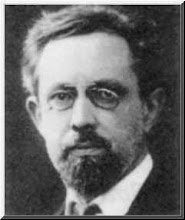As some of you may know I have a hobby project which uses data on the first generation of LCC Junior County Scholars. These people were born about 1881 and it is possible to trace their career histories through to 1939 - which for many was getting close to retirement age. For good measure it is also possible to study their marriages, fertility, mortality and residential histories and make comparisons with their parents, their siblings, their primary school peers (in some cases) and a randomly sampled control group.
The process of assembling the data throws up many fascinating (and distracting) stories. Take for instance Arthur Robert Laird born in Dulwich on the 28th July, 1881. He seemed to have lived an unexceptional life. His scholarship marks were in the mid range and after leaving Wilson's Grammar School in Camberwell he became a clerk in the LCC School Board Office. In 1917 he enlisted in the Royal Flying Corps where he served for the duration as a corporal clerk. In 1939 he was still an LCC clerical officer though he had moved out west to the bucolic sounding Ivy Cottage in Epsom and Ewell.
Just another rather dull life, or was it? The first intriguing thing about Arthur Laird is that his father, Robert William Laird, describes himself on the census returns as a lithographic artist. This probably means that he was a commercial printer and I can find no trace of Robert's 'art' in any public collection. But to my surprise a number of collections hold works by Arthur Robert Laird among others Southwark's Cuming Museum, the V&A (who get his death date wrong), the British Museum, the National Gallery of Canada, Manchester Art Gallery, Princeton University Library, and Georgetown University Library. Several of his works have recently been sold at auction by Bonhams (see here and here).
It turns out that Arthur, though he earned his living as a humble clerk had another life as a printmaker. After leaving school he continued his studies at the Camberwell School of Arts & Crafts and at the Westminster School of Art where he studied under Harold Gilman and Walter Sickert. He was a member of the Senefelder Club - named after the creator of the lithographic printing technique - and the Society of Graphic Arists and the co-founder of the South London Art Group. During his life he exhibited at the Royal Society of British Artists, the Royal Academy and in the US.
Not such at dull life after all.









No comments:
Post a Comment